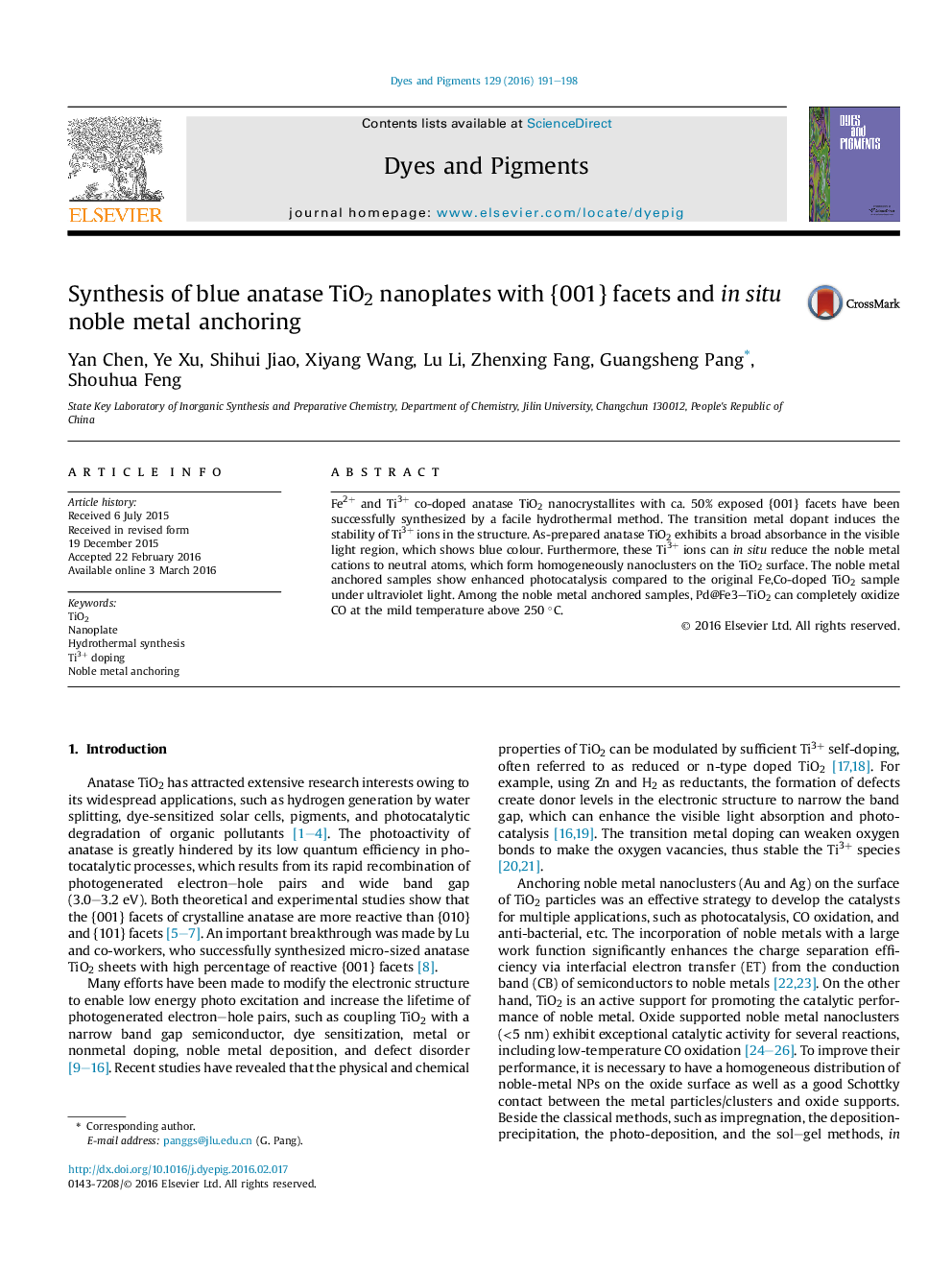| Article ID | Journal | Published Year | Pages | File Type |
|---|---|---|---|---|
| 175546 | Dyes and Pigments | 2016 | 8 Pages |
•A hydrothermal method was developed to synthesize blue TiO2 nanoparticles.•The reaction of Fe with Ti4+ can lead to the formation of Fe2+ and Ti3+ centers.•Ti3+ ions can in situ reduce noble meal salts to form noble metal nanoclusters.•The noble metal nanoparticles were in suit deposited with homogeneous separation.•The samples show effectively photocatalysis and CO oxidation abilities.
Fe2+ and Ti3+ co-doped anatase TiO2 nanocrystallites with ca. 50% exposed {001} facets have been successfully synthesized by a facile hydrothermal method. The transition metal dopant induces the stability of Ti3+ ions in the structure. As-prepared anatase TiO2 exhibits a broad absorbance in the visible light region, which shows blue colour. Furthermore, these Ti3+ ions can in situ reduce the noble metal cations to neutral atoms, which form homogeneously nanoclusters on the TiO2 surface. The noble metal anchored samples show enhanced photocatalysis compared to the original Fe,Co-doped TiO2 sample under ultraviolet light. Among the noble metal anchored samples, Pd@Fe3–TiO2 can completely oxidize CO at the mild temperature above 250 °C.
Graphical abstractFigure optionsDownload full-size imageDownload as PowerPoint slide
